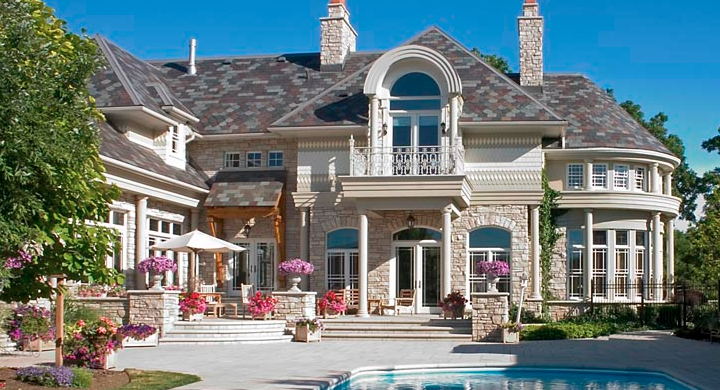| Just the Peaks
This newsletter, at a glance
|
Today’s luxury homebuyers are looking beyond material value
Read on for up-and-coming trends in the high-end market
Thanks to a thriving economy, the line between middle class and upper class has become increasingly blurred. Privileges once exclusive to the wealthy—fancy cars, boats, jewelry and brand-name clothing—are now accessible to people with just a fraction of the income. Likewise, ‘luxury’ real estate has become more affordable.
To reclaim that coveted sense of exclusivity, affluent homebuyers are now demanding an entirely new set of criteria—and it has little to do with the actual properties. Many of these popular requests are also expressed in luxury sellers’ marketing strategies.
From rags to real estate
Before exploring the latest trends, let’s define ‘luxury’ real estate, as the title is notoriously difficult to lock down. There’s no master list indicating what characteristics a home must possess to be considered ‘high-end.’ However, in most areas of the United States, luxury status means anything priced above $1 million; in more expensive metro locales, the designation can soar in excess of $5 million. It all depends on where you are.
A cool million may command a 10-bedroom home in the Carolinas or in the Midwest; but take the same money to Los Angeles, New York or Miami, and you’re looking at a modestly sized apartment or condominium. The point is—luxury real estate is relative.
“While each market certainly has its own nuances, one trend has become very apparent in the luxury real estate market: it’s all about the experience,” reports McKissock. “Savvy homeowners, luxury real estate professionals, developers, architects, and designers are all putting their emphasis on defining the experience as part of their luxury market message.”
With this trend, buyers are dismissing sprawling mansions and tangible home goods in favor of more elusive perks like privacy, protection, good schools and lux amenities built right into their local communities.
The map of luxury
(2018 data)
- Maui, Hawaii
- Palm Beach, Florida
- Washington, D.C.
- Kauai, Hawaii
- Brooklyn, NY
- LA Valley, California
- Detroit, Michigan
- Las Vegas, Nevada
- Boulder, Colorado
- Raleigh, North Carolina
- Shortest days listed, home – Raleigh, Durham, North Carolina
- Shortest days listed, condo – Silicon Valley, California
- Most affordable homes per sq/ft – Fort Worth, Texas
- Most affordable condos per sq/ft – Orlando, Florida
- Most expensive homes per sq/ft – Los Angeles, California
- Most expensive condos per sq/ft – Vail, Colorado
- Most ‘evolving’ market – Staten Island, New York
**Stats by Coldwell, as reported in HousingWire
To gain a better understanding of buyers’ affinity for all things ‘experiential,’ here’s a breakdown of three popular luxury real estate requests:
Privacy
It seems a silly juxtaposition. Buyers say they want seclusion, but research shows that more and more luxury buyers—such as those in Toronto—are trading in their isolated mansions for cramped condos in the busy city. How’s a seller to accommodate?
While privacy used to mean solitude, now, it’s more about illusion. Buyers want apartments with impressive views of the cityscape—not of neighboring high-rises. And when that’s not possible, developers strive to meet this demand with other ‘private’ amenities such as rooftop balconies, dog parks, resident restaurants and onsite spas.
Lifestyle
Today’s luxury buyers aren’t easily seduced by plush furniture, high-tech goodies or the promise of a doorman. Instead, they’re in search of immaterial comforts—amenities and facilities that impart a feeling of exclusivity. Oftentimes, these perks aren’t necessarily expensive. “It’s part of a larger trend in which the affluent are increasingly investing in intangible goods,” says Andrew Kotchen, a New York designer.
So, here’s the conundrum. What’s the price of freedom, comfort, or protection? Oftentimes, these promises are outside a seller’s influence. Current buyers not only seek safe neighborhoods, but ones also known for their ‘hot’ status. Properties within proximity of popular bars, eateries, shops, and airports remain the most sought-after.
As McKissock says, “Quality over space has become their priority.”
Education
Areas with high-performing school districts are perpetually in demand. The ‘added value’ of a quality education has a direct impact on buyers’ families and, in the context of real estate, has consistently commanded top dollar.
“For instance, Chinese buyers often purchase second homes for educational purposes, looking for properties near top-notch high schools and universities that their children might attend,” says Anne Machalinski of Mansion Global. “Because they prioritize making good investments that have appreciated potential in the long-term and solid yields in the short-term, cities like New York, San Francisco and Los Angeles are popular.”
Back in 2015, a Realtor.com survey found that 1 in 3 homebuyers would settle for a smaller home if it meant getting into a good school. So, as the nation’s wealthiest buyers trade in precious square footage for cost of tuition, we can’t help but wonder—
What ‘experiential’ trends will rock the luxury real estate market next?
Everest says: move to what moves you




